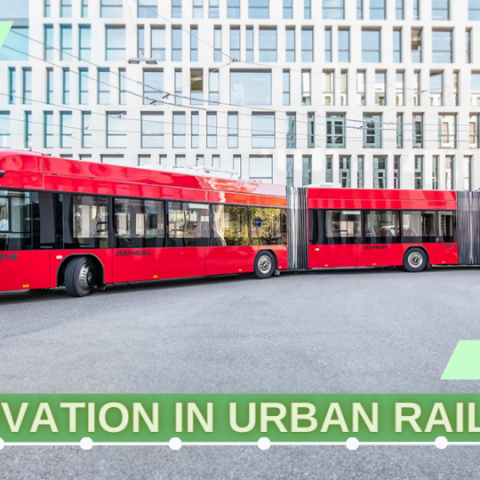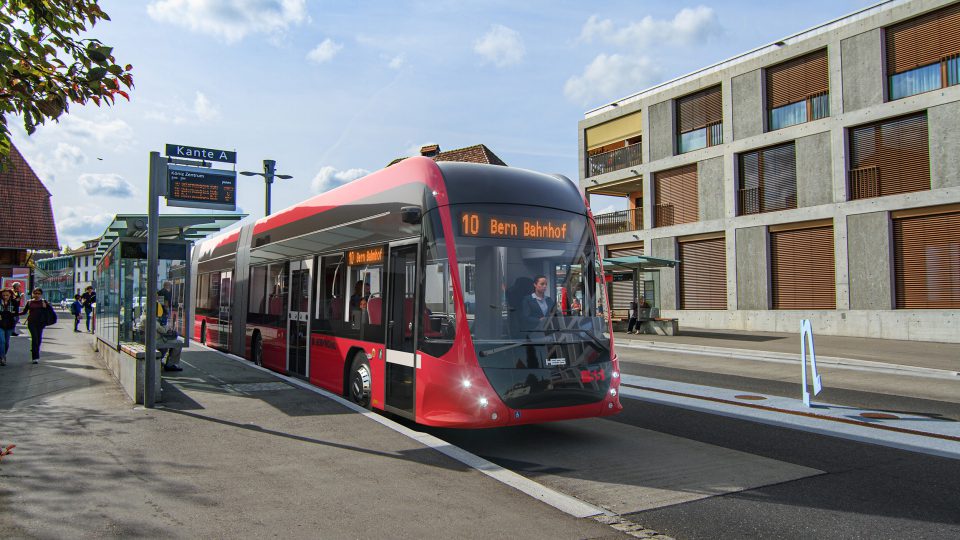New trolleybus line (and thirteen 24-metre double-articulated by Hess) in Bern
by Stefano Alfano Benr chooses the trolleybus again. And it does so in grand style. Bernmobil, the operator of public transport in Bern, has signed a contract with Hess for the delivery of 13 24-metre double-articulated trolleybuses, model lighTram® 25 DC, similar to the 14 already in operation since 2018. The new vehicles are scheduled […]

by Stefano Alfano
Benr chooses the trolleybus again. And it does so in grand style. Bernmobil, the operator of public transport in Bern, has signed a contract with Hess for the delivery of 13 24-metre double-articulated trolleybuses, model lighTram® 25 DC, similar to the 14 already in operation since 2018.
The new vehicles are scheduled to be delivered by 2026. The price per vehicle is approximately CHF 1.700.000; upon completion of the deliveries, the trolleybus fleet in Berne will consist of 41 trolleybuses, 27 of which are 24-metre and 14 of which are 18-metre. The average age of the fleet, which is currently less than six years old, will be further reduced.
The new trolleybuses will receive the new design proposed by Hess, which will characterise future production. The 24-metre trolleybuses are high-capacity vehicles; the units currently in service in Bern, in the interior layout designed by Hess, can carry up to 224 passengers, a capacity that is around 30% higher than that of an 18-metre trolleybus.
Potrebbe interessarti
13 Hess double-articulated trolleybuses will be deployed in Bern
The lighTram® 25 DC has five doors for boarding and alighting passengers, 48 seats, large multifunctional areas for standing passengers and optimised flow. The area at the second door offers comfortable space for wheelchair users. Passengers with buggies and bicycles will have access from the third and fourth doors. The latest generation air conditioning system with heat pump and environmentally friendly CO2 as refrigerant contributes to vehicle sustainability. In addition, the 350 kW progressive battery recharging technology allows the batteries to be charged quickly when the vehicle is under an overhead line, so that it can be operated for a number of kilometres even without infrastructure.

Bernmobil currently operates three trolleybus lines: line 11, which connects the railway station with the Neufeld car park, the historic line 12, in operation since 1940, from Holligen to the Paul Klee centre, passing through the railway station and Barengraben (the city’s landmark bear pit), and line 20, which connects Langgasse with the central station and Wankdorf station, an interchange with the suburban network and tram line 9. Line 11 has a frequency of about 7 minutes during peak hours and 10 minutes during off-peak hours, and runs from 6 a.m. to 1 a.m. every day of the week. Line 12 has a frequency of 5 minutes during peak hours and 6 minutes during off-peak hours, while after 8 p.m. it runs every 10 to 15 minutes. The same operating schedule also applies on Saturdays and holidays, with the first departures from the Paul Klee Centre at 5.34 a.m. and from Holligen at 5.40 a.m.
Line 20 runs at peak hours every 3-4 minutes, with some limited runs to the central station, every 8 minutes on Saturdays and about every 6 minutes on public holidays. The first departures are around 5.30 a.m. from both terminals, the last ones around 1 a.m.
Bernmobil has decided to convert the busiest section of line 10, between the central station and the Schliern district, into a trolleybus line, on a route of around 5.5 kilometres, and where the transport offer is no longer deemed sufficient. Thanks to the progressive recharging technology, it will not be necessary to build the electric infrastructure, on the entire line, but on 40 per cent of the route, which will reduce the recharging time for the vehicles, which will not have to stop at the terminals to recharge their batteries. The intervention will increase the capacity of Line 10, which has always been a strong axis of the Bernese transport network, and a rationalisation of the timetable will be possible. By the end of 2024, work will begin on building the infrastructure and adapting the stops.
With a view to decarbonisation, more and more electric vehicles will also be available in Berne, which is receiving the 27 Tramlinks ordered from Stadler, some of which are already in service.










